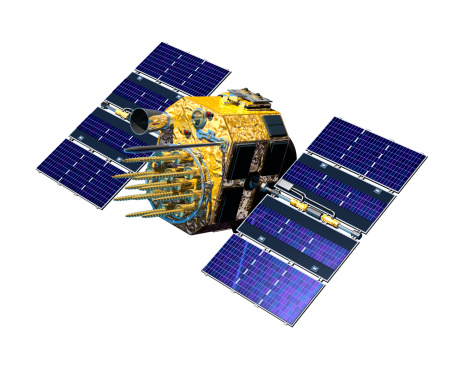
Frequency Control

A Brief History of UTC Traceable Frequency Control
Prior to the widespread use of GPS for accurate timekeeping and frequency control, there were few users of precision, UTC-traceable frequency control equipment because it was very expensive and global coverage was unavailable. For many years, the best source of precision UTC traceable frequency was derived from the 100 kHz transmissions of the Loran-C radio-navigation system. The main application for these frequency standards was secure military communications.
Loran-C and the Disciplined Frequency Standard
After the divestiture of AT&T in the 1980's, and the decentralization of the telecommunications clock distribution hierarchy, these Loran-C based frequency standards were widely deployed throughout North America by MCI and Sprint to provide local Stratum I reference frequencies for their wired telecommunications networks. Though expensive, they were less so than a cesium beam atomic standard, which had been the only other alternative. They also provided near perfect frequency agreement across the entire network, which free-running, independent cesiums could not do. In fact, their deployment by the MCI/Sprint upstarts often exposed malfunctioning cesium standards operating in the legacy AT&T network.
During that era, Loran-C frequency standards were composed of two rack-mounted boxes. One box was the actual Loran-C receiver, and the other box was the disciplined frequency standard, which held an ultra high-stability quartz oscillator. The disciplined frequency standard fed the local oscillator to the Loran-C receiver and the Loran-C receiver fed a phase-corrected version of the local oscillator back to the disciplined frequency standard. The disciplined frequency standard then corrected the frequency of the quartz oscillator to match the phase-corrected frequency. The disciplined frequency standard also measured the frequency drift rate of the ultra high-stability quartz oscillator so that it could compensate for its drift during a Loran-C signal interruption. In 1990, when GPS was not quite ready for prime time, this pair of boxes would cost about $25K.

GPS Impact
When GPS-derived time and frequency references arrived in the late 1980's, they were exotically expensive and satellite signals were only available for brief periods throughout the day. Because of this, the disciplined oscillator became a non-optional, integral component of a GPS frequency reference receiver. Though now a single-box solution, and delivering unprecedented reliability, accuracy, and precision, the pricing situation was unimproved. Few could afford them for any but the most high-profile, high-revenue-producing applications.
Over time, with a full satellite constellation and many vendors of GPS-based solutions in the market, this situation evolved to the point that such equipment is now virtually a commodity, with complete units costing less than a single ultra-high-stability quartz oscillator. The large demand for GPS-disciplined oscillators for synchronizing the worldwide deployment of CDMA wireless telecommunications base stations is, in large part, responsible for the precipitous price drop. In general, the performance of these "commodity" GPS frequency standards does not come close to that of the original Loran-C disciplined oscillator systems which used far superior quartz oscillators.
Indirect GPS
Until 2001, all viable time dissemination systems using radio frequency signals required antennas to be installed with good sky visibility. This is often one of the largest problems facing synchronization equipment users because easy roof-top access for antenna installation is often not available. EndRun Technologies pioneered an "indirect" form of GPS technology, wherein the CDMA wireless telecommunications base stations effectively act as GPS repeaters. CDMA wireless signals are receivable deep inside buildings so antenna installation is not a problem. Using these signals as a frequency reference source, along with sophisticated control algorithms and quality oscillators, can provide a frequency output that matches UTC to parts in 10 to the 12th. As the spread of this wireless technology has unfolded over the last decades, we have deployed thousands of these "indirect" GPS systems around the globe.
EndRun Technologies and Frequency Control
Since the 1980s, our engineers have been key contributors to the evolution of modern frequency control. As such we are uniquely positioned to provide the finest quality GPS frequency standards for the most demanding applications. Our combination of in-depth knowledge of radio-navigation receiver technology, precision quartz oscillator manufacturing and modeling, digital frequency control algorithms and low-phase-noise expertise is simply unmatched in our industry.
